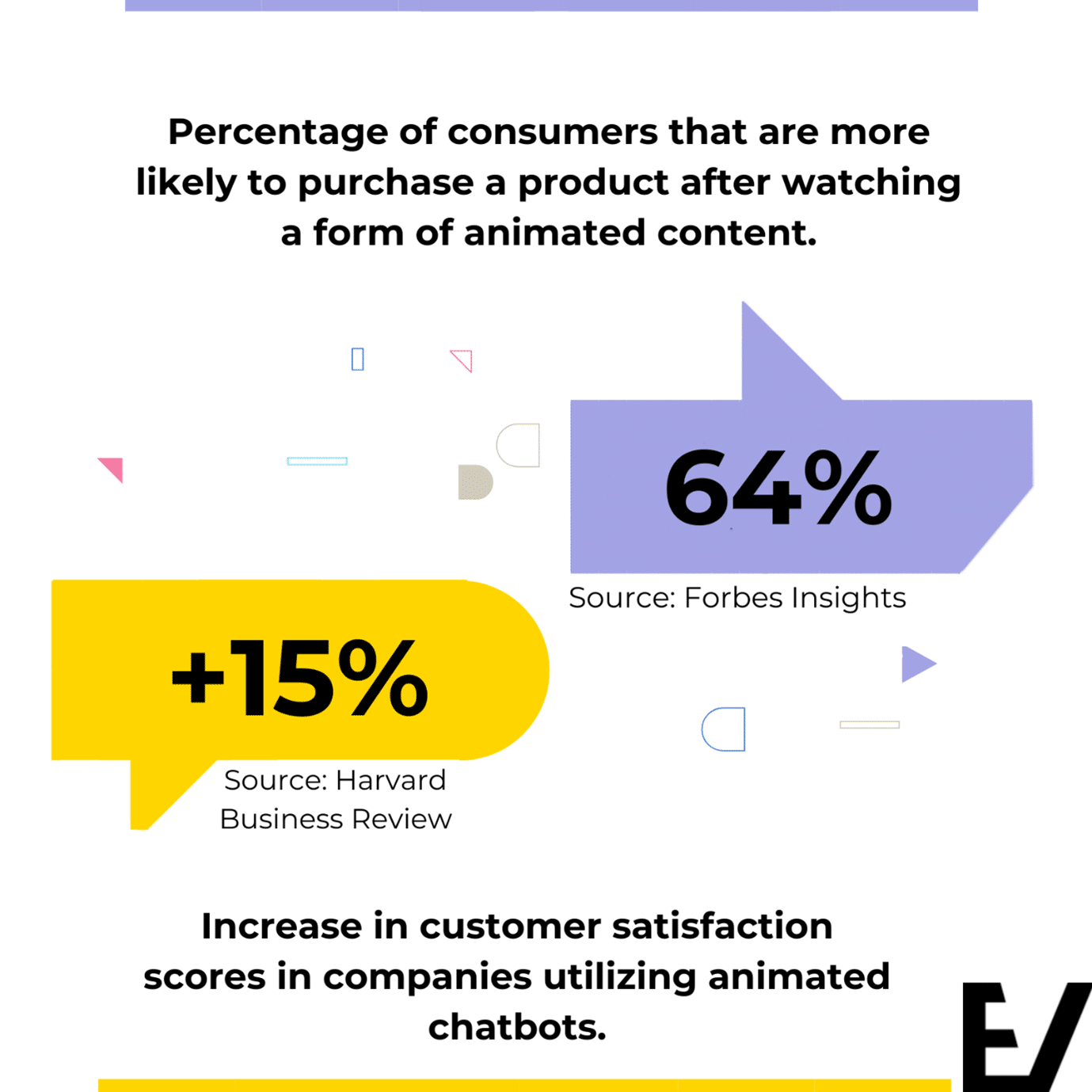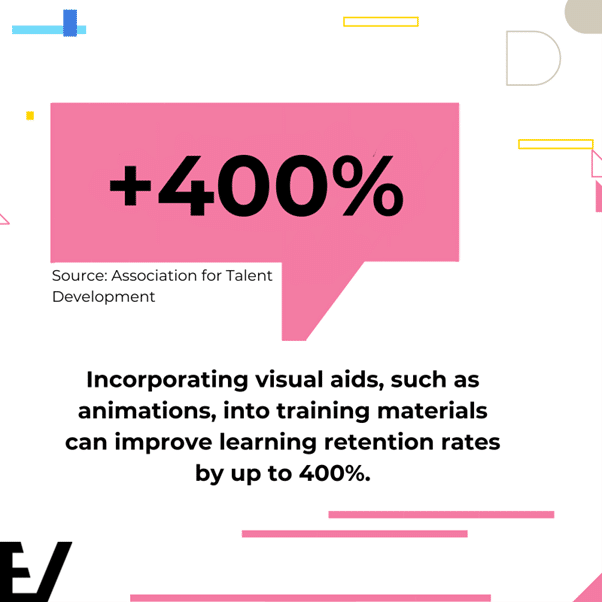Introduction
Animation has long captivated audiences with its ability to bring imagination to life, tracing its roots back to the earliest forms of visual storytelling. From the hand-drawn animations of Disney’s golden age to the computer-generated imagery (CGI) of today, animation has continuously evolved, pushing the boundaries of creativity and innovation.
Simultaneously, the service industry has undergone significant transformations, fueled by advancements in technology and changing consumer expectations. From hospitality and healthcare to education and beyond, the service sector plays a crucial role in our daily lives, providing experiences that we rely on a daily basis.
In this context, animation has emerged an important tool supporting the development of the service industry. Its versatility and ability to engage audiences on emotional and intellectual levels have made it essential across various service-related sectors.
This article explores the impact of animation on the service industry, delving into its historical significance, its integration into diverse service sectors, and its role in enhancing customer experiences and operational efficiency. By examining the intersection of animation and service provision, we uncover the transformative potential of this creative medium.
The rise of animation in service industries
Animation has spread across numerous sectors within the service industry, revolutionizing the way businesses engage with their customers. Across sectors such as hospitality, healthcare, and education, the integration of animation has become increasingly significant, especially as a means of communicating new benefits, user experiences or other brand communications.
In the hospitality sector, for instance, animations are utilized extensively in promotional materials, virtual tours, and interactive maps, providing guests with immersive previews of accommodations and amenities. According to a study by the American Hotel & Lodging Association, 78% of surveyed hotels reported using animated videos for marketing purposes, showcasing a significant reliance on animation within the industry.
Similarly, within the healthcare sector, animations play a crucial role in patient education, procedural simulations, and medical training. Research conducted by the Journal of Medical Internet Research revealed that 63% of healthcare organizations incorporate animated videos into patient education materials, highlighting the widespread adoption of animation as a tool for disseminating valuable information.
In the field of education, animations are used to explain complex concepts, engage learners, and facilitate interactive learning experiences. Data from the National Center for Education Statistics indicate that 89% of K-12 educators utilize animated educational videos in their classrooms, underscoring the integral role of animation in modern pedagogy.
Several factors drive the widespread adoption of animation across these diverse service sectors. Technological advancements have made animation more accessible and cost-effective, enabling businesses to leverage its capabilities more quickly and cheaply. Additionally, the rising demand for personalized and immersive experiences has spurred the adoption of animation as a means of differentiation and engagement within the competitive landscape of the service industry. Together these factors help animation transform the way businesses interact with their customers.

Enhancing customer experience
Animation stands as a strong tool in the arsenal of service-oriented businesses, impacting customer experience through enhanced engagement and satisfaction. Its dynamic nature not only captivates audiences but also facilitates clearer communication of complex ideas and brand messages.
One significant aspect of animation lies in its ability to elevate customer engagement and satisfaction. Research by Forbes Insights reveals that 64% of consumers are more likely to purchase a product after watching a video, demonstrating the effectiveness of animated content in capturing attention and driving purchasing decisions. Animated explainer videos, for instance, have proven to be particularly effective in conveying product features and benefits in an engaging and easily digestible format, leading to higher conversion rates and customer satisfaction levels.
Case studies further illustrate the successful implementation of animation in service-oriented businesses. For instance, the use of animated virtual assistants in customer support has led to significant improvements in response times and resolution rates. According to a study by Harvard Business Review, companies utilizing animated chatbots witnessed a 15% increase in customer satisfaction scores compared to those relying solely on text-based interactions, highlighting the positive impact of animation on customer service experiences.

Moreover, animation serves as a powerful tool for storytelling and brand communication within service industries. By leveraging animated characters, narratives, and visual metaphors, businesses can convey their brand identity and values in a compelling and memorable manner. Research conducted by Nielsen Norman Group indicates that animated storytelling can increase message retention by up to 22%, underscoring its effectiveness in leaving a lasting impression on consumers.
In essence, the role of animation in enhancing customer experience extends beyond mere entertainment – it helps companies build more meaningful connections with their clients. By leveraging animation’s ability to captivate, inform, and inspire, service-oriented businesses can create brand experiences that match with their target audience, driving higher engagement and increasing the chances of long-term success.
Streamlining operations and training
In service industries, efficiency and effectiveness are paramount. Animation can help streamline operations and optimize training processes, offering a range of benefits from enhanced comprehension to cost-effective scalability.
The utilization of animation in process visualization and training modules has revolutionized the way organizations convey information and train their personnel. Complex procedures and workflows can be distilled into easily understandable visuals, helping with comprehension and retention. Studies by the Association for Talent Development indicate that incorporating visual aids, such as animations, into training materials can improve learning retention rates by up to 400%, underlining the effectiveness of animation in facilitating knowledge transfer.

Efficiency improvements are further realized through the deployment of animated guides, tutorials, and simulations. By simulating real-world scenarios in a controlled environment, animation enables trainees to practice and refine their skills without the associated risks and costs. This approach not only accelerates the learning process but also fosters confidence and competence among employees. Research by the Society for Human Resource Management demonstrates that companies utilizing animated simulations experience a 25% reduction in training time and a 20% increase in employee productivity, showcasing the tangible benefits of animated training materials.
Moreover, animated training materials offer cost-effectiveness and scalability advantages that traditional training methods struggle to match. Unlike instructor-led training sessions, which generate significant expenses related to venue rental, travel, and instructor fees, animated modules can be deployed digitally at minimal cost. Furthermore, the scalability of animated training materials allows organizations to reach a broader audience without incurring additional expenses. A study by Training Industry Quarterly found that companies transitioning to animated e-learning modules saw a 30% reduction in training costs and a 40% increase in training scalability, underscoring the financial advantages of animation in training initiatives.
In summary, animation’s role in streamlining operations and training processes extends far beyond visual appeal – it represents a strategic investment in efficiency, effectiveness, and cost optimization. By harnessing the power of animation to visualize processes, simulate experiences, and deliver scalable training solutions, service-oriented businesses can enhance performance, mitigate risks, and drive sustainable growth in an increasingly competitive landscape.
Innovation and customization
Animation serves as a catalyst for innovation in service delivery, empowering businesses to reimagine traditional approaches and embrace personalized, interactive experiences. Through customized avatars, virtual assistants, and immersive interfaces, animation drives innovation while catering to the individual needs and preferences of consumers.
Customization lies at the heart of animation’s impact on service industries. Through the use of personalized avatars, businesses can provide customers with unique, tailored experiences that reflect their individual preferences and behaviors. These avatars serve as digital representatives, guiding users through various service offerings and adapting their interactions based on user input and feedback. By personalizing the user experience, businesses can foster stronger connections with their clientele and enhance brand loyalty.
Furthermore, animation paves the way for the integration of augmented reality (AR) and virtual reality (VR) applications into service delivery. AR and VR technologies enable users to interact with virtual environments in real-time, blurring the lines between the physical and digital worlds. In the context of service industries, AR and VR applications offer immersive experiences that transcend traditional limitations, allowing users to visualize products, simulate experiences, and engage with services in entirely new ways. From virtual property tours in real estate to interactive medical simulations in healthcare, AR and VR technologies powered by animation are reshaping the future of service delivery, offering limitless possibilities for innovation and customization.
Overcoming challenges and ethical considerations
As animation continues to play a pivotal role in reshaping the service industry, it is essential to address potential challenges and ethical considerations to ensure responsible and inclusive use.
Accessibility issues and cultural sensitivity represent significant challenges in the integration of animation into the wider services sector. Not all consumers may have equal access to animated content due to disabilities or limitations in technology. Moreover, cultural differences must be considered to avoid causing offense or misunderstanding. Strategies such as providing alternative formats for content and conducting cultural sensitivity training can help mitigate these challenges and ensure inclusivity.
Ethical considerations surrounding data privacy, algorithmic biases, and digital inclusivity have to be taken into consideration. The collection and utilization of user data must be conducted transparently and ethically, with stringent measures in place to safeguard privacy. Additionally, algorithms powering animated systems should be scrutinized for biases that may perpetuate discrimination or inequality. By prioritizing digital inclusivity and upholding ethical standards, businesses can foster trust and accountability while benefiting from using animations.
Strategies for mitigating risks and ensuring responsible use of animation technologies in services include conducting thorough impact assessments, fostering interdisciplinary collaboration, and engaging with stakeholders to gain feedback and address concerns. By proactively identifying potential risks and implementing safeguards, businesses can minimize negative consequences and maximize the benefits of using animated videos.
Future outlook and conclusion
The future of animation in the service industry is filled with possibilities. As artificial intelligence, augmented reality, and virtual reality continue to advance, animation will play an increasingly integral role in shaping the future of not just the service sector.
Emerging technologies such as AI-powered virtual assistants and immersive AR/VR experiences hold immense potential for revolutionizing service delivery, offering unprecedented levels of personalization and interactivity. From virtual concierges in hospitality to augmented reality shopping experiences in retail, animation-driven innovations are poised to redefine the way businesses engage with their customers.
In conclusion, the transformative power of animation in service sectors cannot be overstated. From enhancing customer experiences and streamlining operations to fostering innovation and customization, animation has become an indispensable tool for businesses seeking to thrive in an increasingly digital world. By addressing challenges and ethical considerations while embracing emerging technologies, the service industry can harness the full potential of animation to create a bright future for itself.
